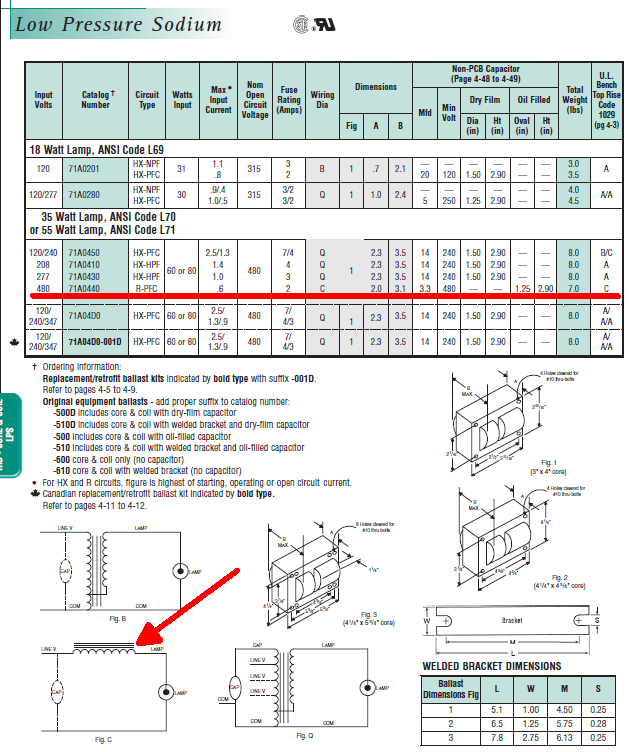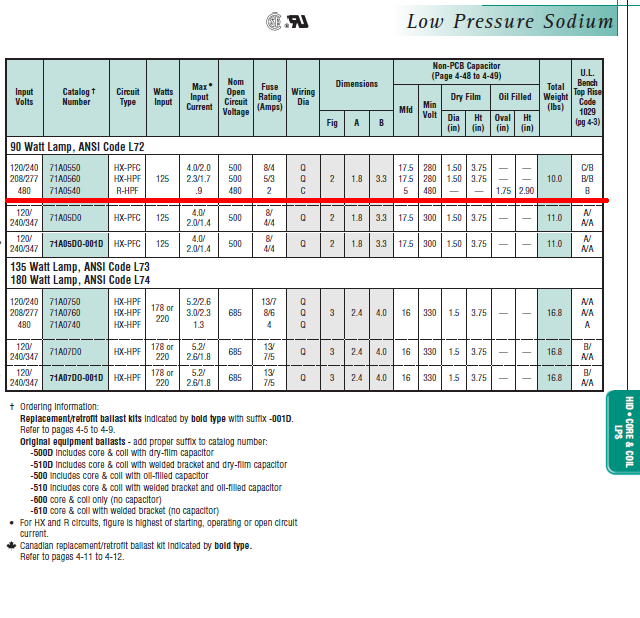I did Remember Correctly!
Oh! Found it, my favorite ballast! Page 4-46 (165)
https://s3.amazonaws.com/cesco-content/unilog/Batch5/781087/116417-Catalog.pdf
Wiring diagram points to figure C, and "R-PFC" means reactive single coil choke ballast, power factor corrected.
This elegant ballast lets you drive 35, 55 and 90 watt Low Pressure Sodium lamps without an igniter. Igniters are common on European SOX lamps and do fail. The 480 volt open circuit voltage strikes the arc, while the inductor then limits the current to a point where the arc voltage is dropped to a suitable level for warm up and normal operations.
That means there is nothing to go wrong. No extra windings or igniters to fail like on HPS and Metal Halide.
480 volts is also a great voltage to run outdoor lighting circuits at- common on highways and bridges- most cobra heads on DOT roadways are fed at 480 volts line to line. Sadly because the open circuit voltage for common HPS and metal halides isn't 480, the need for complex regulation (trapazoid volt/current curves for HPS // peaked OCV for MH warm up), tight constant wattage limits and the need for a 2-4kv starting pulse leads to fixtures having an absolutely MASSIVE, HOT, Heavy, multi winding multi tapped capacitor in series iron ballast with an igniter that fails in short order when the bulb starts cycling or gives out completely.
A choke ballast on the other hand has nothing that can fail. Can easily last 40-60 years. Bulb can be swapped out without having to worry if the ballast/igniter is good or will give out before the next re-lamping cycle. Its like having a preheat fluorescent tube but without the need for a starter. Instant start cold cathode corona discharge, done with a single core and coil.
Nothing in lighting technology comes closer to simplicity other than an incandescent bulb or a neon indicator in series with a resistor.








